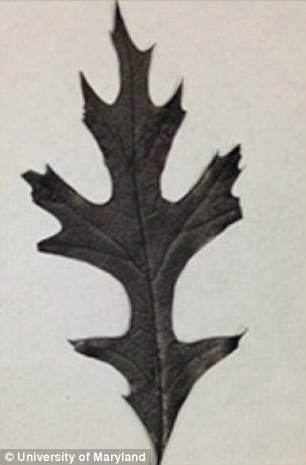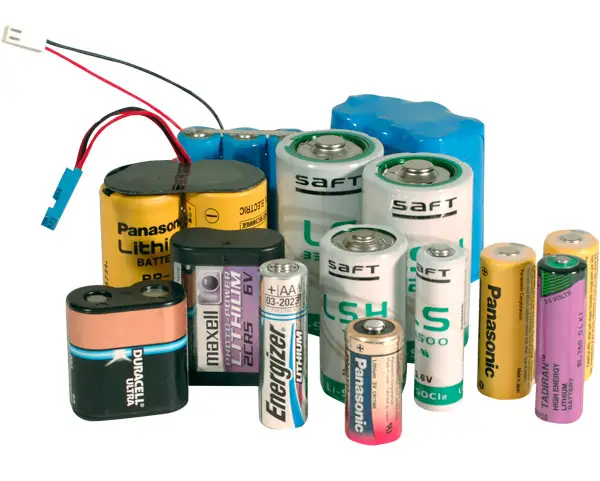Health
Did Scientists Just Make a Battery Out of an Oak Leaf?

Scientists have just created one of the very first eco-friendly batteries out of a baked oak leaf. Sounds crazy right? Who knew that using a carbonized oak leaf pumped full of sodium (salt) would create a battery’s negative terminal capable of holding a charge.
Recently an article from the University of Maryland was published in the journal ACS Applied Materials Interfaces where they demonstrated their oak leaf battery.
“Leaves are so abundant. All we had to do was pick one up off the ground here on campus,” said visiting professor and Author Hongbian Li, from the University of Maryland’s department of materials science and engineering.
What is so exciting about this news is that this type of battery can be made out of other eco materials such as peat moss and banana peels as well. Oak leaves were chosen for the study because they take the least amount of preparation in order to be made into a battery.
Lithium Battery Concerns
Most rechargeable batteries that are used in society today are made out of lithium. Just imagine your computer, remote control or cell phone battery and you will know what I am talking about.
When using lithium, there can be some concerns to ourselves and the environment moving forward and that is why scientists are looking for eco-friendly alternatives.
Lithium battery companies are working very hard to make sure that batteries are as safe as possible for use in our homes. Sometimes in rare cases, microscopic metal particles will come into contact with other parts of the battery cell which can cause it to short circuit. In some cases, a failed battery can explode which can expose us to dangerous battery chemicals.
Unfortunately, After we use batteries often times they end up in the trash and in the local dump when they aren’t disposed of in the proper ways.
Cleanup of environmental issues caused by lithium manufacturing is expensive both in money and the cost to our environment. According to the EPA, there was a 7 million dollar cleanup project because of an old Pennsylvania lithium processing site.
“Lithium, boron and chromium were also detected in off-site public and private wells.”
The CDC also evaluated the risks of the contamination on their site here. Long story short we must be very careful what kinds of chemicals we want to risk having dumped into our water supply because even though Lithium was used in the past as a prescription drug treatment for mental health issues, we are starting to better understand how this light metal can cause serious health issues.
Lithium toxicity can appear in the form of tremors, mild ataxia, drowsiness, muscular weakness, vomiting, and diarrhea. If you are exposed over a longer period of time then the lithium may start to block your nerves ability to communicate with your muscles.
Scientists Use Oak to Create a new Battery Alternative
Now scientists are working to make a safer eco battery that will be rechargeable just like the lithium batteries but without the consequences. So far sodium can hold a longer charge but struggles to recharge as many times as lithium at this point in time.
 One of the biggest roadblocks in this project is finding a good anode material that can work with sodium since it is large than lithium. Some scientists have looked into using graphene and other materials which will retain and attract the sodium but most take too much time and money to produce. However, with the oak leaf, everything changes.
One of the biggest roadblocks in this project is finding a good anode material that can work with sodium since it is large than lithium. Some scientists have looked into using graphene and other materials which will retain and attract the sodium but most take too much time and money to produce. However, with the oak leaf, everything changes.
In this new case, scientists found that they could heat the oak leaf at 1,000 degrees C for an hour in order to burn off the underlying carbon structure. The structure of the leaf is also important in this discovery because the underside is covered in pores where the leaf would absorb water. In the battery design, the pores will absorb sodium electrolytes. The top of the leaf has layers of carbon that helps the leaf be tough enough to create sheets of nanostructured carbon where the sodium can be absorbed and the leaf can carry the charge.
“The natural shape of a leaf already matches a battery’s needs: a low surface area, which decreases defects; a lot of small structures packed closely together, which maximizes space; and internal structures of the right size and shape to be used with sodium electrolyte,” said author Fei Shen.
“We have tried other natural materials, such as wood fiber, to make a battery,” said assistant professor Liangbing Hu, of materials science and engineering. “A leaf is designed by nature to store energy for later use, and using leaves in this way could make large-scale storage environmentally friendly.”
According to the scientists, the next step is “to investigate different types of leaves to find the best thickness, structure and flexibility” for the electrical energy storage process. Researchers are focusing on perfecting the design and aren’t looking to commercialize right now.
Perhaps we will learn from nature the needed technology to get away from harmful chemicals and create a safer world for everyone.
Sources-
Image credit: Sharon Freeman
Typos, corrections and/or news tips? Email us at Contact@TheMindUnleashed.com

